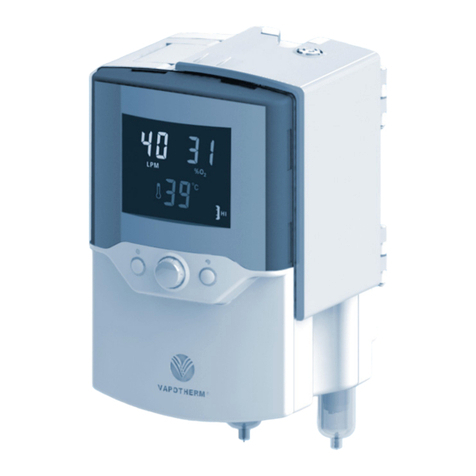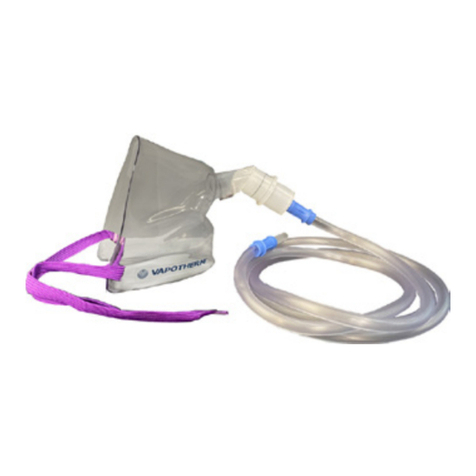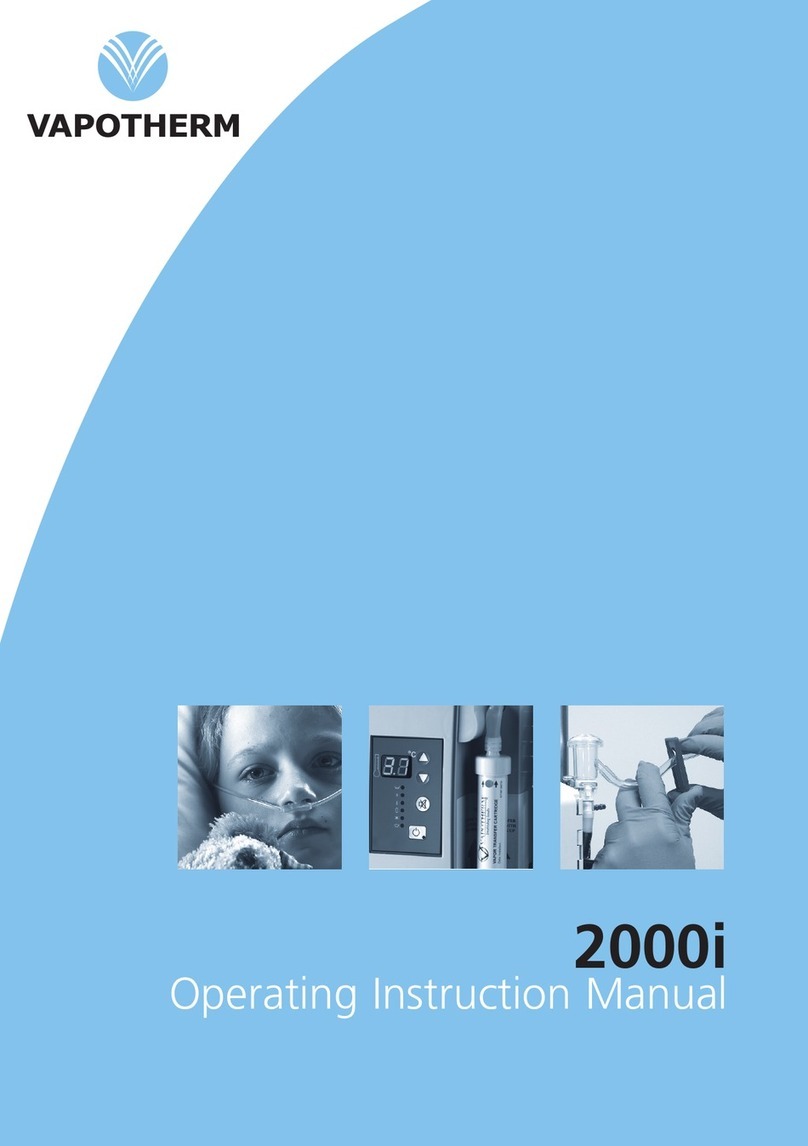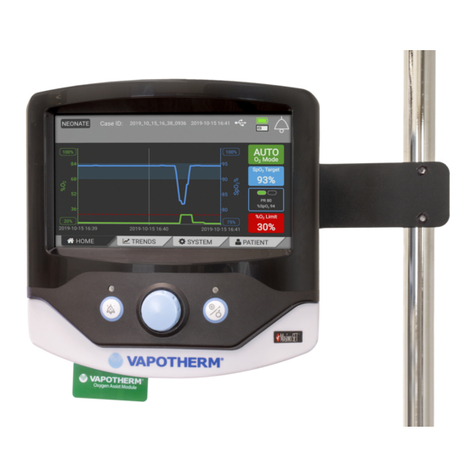
Page 8 Precision Flow Hi-VNI Instructions for Use 3101477-01-EN Rev B
Section 3 Principles of operation
The Precision Flow®Hi-VNI warms and humidifies breathing gas for delivery by a Vapotherm
approved interface at flows from 1 to 40 L/min. The unit incorporates an electronic blender and flow
sensors that allow the oxygen percentage and total gas flow to be set independently.
The Precision Flow®Hi-VNI consists of two parts:
Main unit
• The capital unit which contains all the electrical and electronic components including the
electronic blender and flow controllers, and remote sensors to monitor the disposable water
path. The main unit has no water pathways and the gas pathway contains only dry gas at room
temperature, and consequently does not need internal cleaning or disinfection.
• The flow of oxygen and air are measured by mass flow sensors. The operating software
calculates the required flow of each needed to reach the target flow and oxygen percentage
set by the operator. The system controls gas flows accordingly by adjusting proportional
solenoid valves on the gas lines. An oxygen sensor monitors the gas mixture and signals
any discrepancy between target and measured percentage. The oxygen sensor is automatically
calibrated with oxygen at power-up and every 24 hours.
• Firmware running in the main unit uses sensors to monitor gas pressure, water temperature,
and to detect air leaks into the water pathway of the disposable patient circuit (bubble detector).
Alarms are displayed if any parameters are outside the normal range. Other indicators show low
charge in the backup battery, and the type of cartridge installed. See Appendix for a description
of the firmware states and transitions.
• After a two hour charging period, an internal battery backup will maintain the set flow and oxygen
blend for at least 15 minutes without AC power.
Disposable patient circuit
• The disposable patient circuit (DPC) is comprised
of the disposable water path (DWP), vapor transfer
cartridge (VTC) and delivery tube. Conditions in the
circulating water and gas streams are sensed remotely
via the interface between the main unit and the
disposable water path.
• Vapor transfer cartridge. In the cartridge, blended
gas passes through the lumens of hundreds of parallel
hollow fibers made of a specially developed polymer.
Warm water circulates around the fibers and diffuses
as vapor through the fiber material into the gas stream
flowing through each fiber. Unlike most humidifiers,
there is no direct contact between the water and
gas streams. The gas stream leaves the cartridge
saturated with vapor at the set temperature.
Note: Use only approved cartridges from Vapotherm Inc.
WARNING: The back-up battery is designed for temporary use only, when AC power to the
unit has been interrupted. When the Precision Flow®Hi-VNI is running on battery, there is no
heat or humidity provided with the set flow and FiO2and humidity level may drop below safe limits.
After the battery is fully discharged the device will not operate and patient gas flow will cease.
When fully charged, the battery provides at least 15 minutes of power. The battery is not
intended for patient transport.
Air Outlet
Water Outlet
Air Inlet
Water Inlet


































